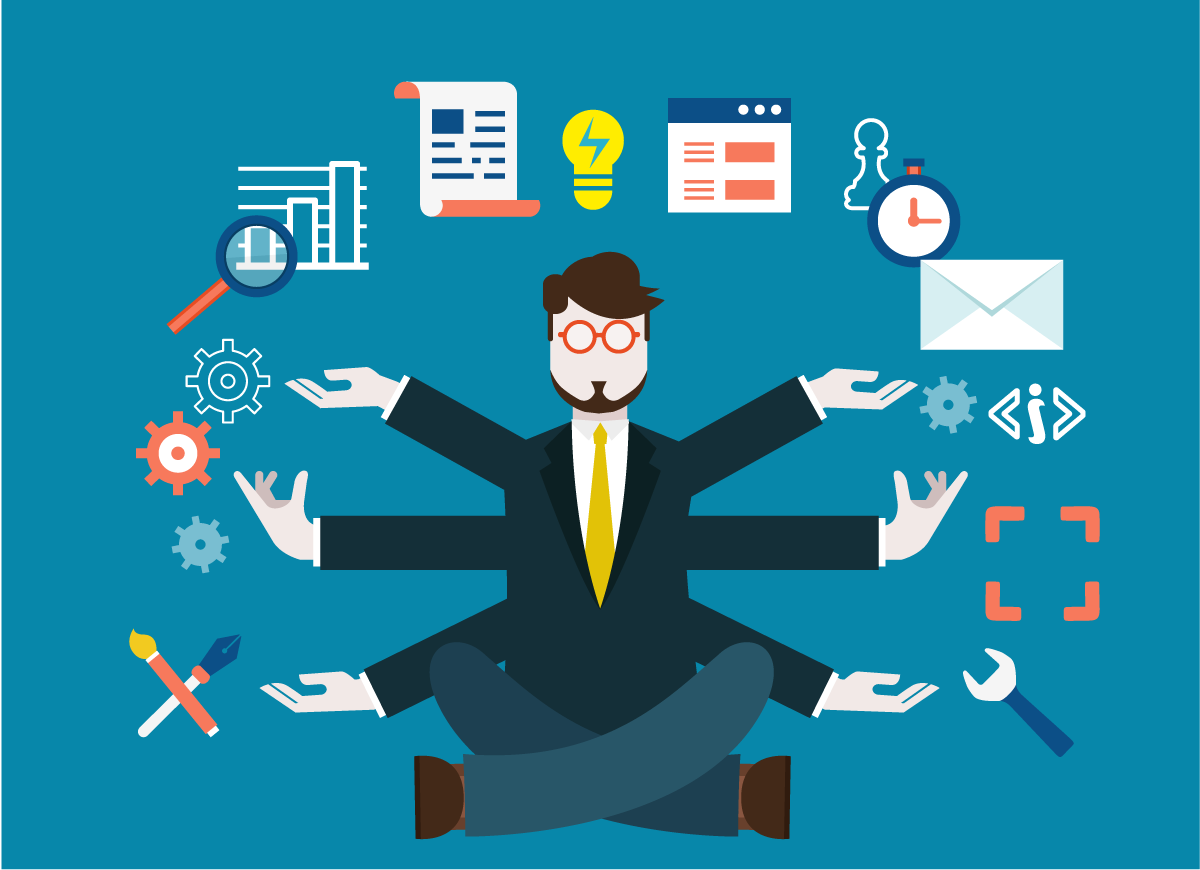Reinforcing Your Bridges

Overworked, drowning in support tickets, yet still seeing customers drift away? It's a story all too common in today's tech landscape. Clinging to manual processes is a recipe for stagnation, and every unhappy customer is lost revenue. To survive and thrive, a customer success approach is no longer optional - it's a necessity.
As tech companies grow rapidly and customers expect more personalized experiences, the challenges of scaling customer success become increasingly significant. Manual processes can no longer keep up with the demand. That’s why we will explore budding strategies for building robust, scalable customer success programs. We’ll cover everything from leveraging automation and technology, to delivering personalized experiences at scale, and building self-service resources and proactive engagement strategies that will help you retain customers and maximize their lifetime value.
The Evolving Customer
Today’s tech-savvy customers aren’t passive consumers; they're active participants in the value creation process. Empowered by readily available information and endless options, they demand speed, personalization, and self-service capabilities. They expect immediate solutions, seamless digital experiences, and personalized interactions that recognize their unique needs and goals. This shift renders the "one-size-fits-all" approach obsolete. In fact, according to the Industrial Marketing Management Journal piece, "Customer success management...," by Graesch et al., "CSM requires robust digital support systems," indicating that businesses need to go beyond traditional methods. The modern customer is digital-first, preferring self-service options for resolving issues, and this shift reflects their ability to use technology to solve their own problems efficiently. Manual processes often lead to high churn rates, a clear problem for many SaaS businesses; in fact, companies that implement a robust customer success platform see a5-10x reduction in churn compared to their prior manual efforts.
Traditional, manual methods of customer success simply cannot scale to meet these new demands. Manual processes are slow, inconsistent, and drain resources. They often lead to frustrated customers, overburdened support teams, limited visibility into the customer journey, and the inability to proactively identify at-risk customers. This reactive stance inevitably results in churn and lost revenue opportunities. The rapid pace of technological change only amplifies these challenges, as new tools and platforms constantly raise customer expectations. Businesses must adapt or be left behind.
Catching Up to the Customer
Fortunately, these challenges also create unprecedented opportunities. By implementing scalable customer success programs, companies can unlock significant growth potential, drastically improve retention rates, and see considerable revenue gains. The transition from manual to scalable operations empowers teams, cuts costs, and enhances the overall customer experience. This shift isn't just about surviving - it's about thriving.
By moving to a more scalable customer success program, businesses can reduce churn and increase revenue; in fact, a recent study showed that these platforms can help generate an additional 10M over 3 years, by implementing a robust customer customer success platform. Implementing scalable customer success strategies leads to significant operational savings, with companies reducing yearly costs by $1-5M on average. Scaling customer success hinges on a few key pillars. First, technology and automation are paramount. CRM systems act as the central data hub, while Customer Success Platforms (CSPs) automate crucial tasks like onboarding and risk management. Automated onboarding ensures users quickly understand the product, while AI-powered chatbots provide instant support. Data analytics then empower businesses to personalize engagement, moving away from generic interactions. With a customer success platform in place, report preparation time can be reduced by 95%, saving companies countless hours, and allowing employees to focus on the tasks that truly matter. Automation enables Customer Success teams to boost productivity, with managers able to touch 3x more customers than before, and track over 100 critical performance metrics - as opposed to the previous 30.
Personalization and segmentation are next. Instead of a one-size-fits-all approach, segmenting customers by usage, industry, or goals enables tailored communication, onboarding, and support. This ensures every customer feels valued and understood. Self-service is likewise an absolute non-negotiable. Robust knowledge bases, help centers, and in-app guides empower users to resolve issues independently, reducing support tickets and improving customer satisfaction. User communities further enhance this by fostering peer-to-peer support. By leveraging automation, companies can expand their customer outreach, reaching 250% more customers than previously possible. Scalable systems allow you to increase customer outreach from 900 to as many as 2800 outreaches per week, building more intimate client relationships. Above all, proactive interpersonal engagement is vital. With earlier risk detection, customer success platforms enable companies to reduce costs for at-risk client retention by as much as 75%, emphasizing the importance of proactive and predictive insights. By monitoring risk indicators and utilizing personalized outreach, businesses can prevent churn, build stronger customer relationships, and proactively provide support.
Landing the Plane
Putting these building blocks into practice requires a strategic framework. First, define clear, measurable customer success objectives and KPIs. Next, map the entire customer journey, pinpointing key touchpoints and potential pain points. Create customer success playbooks that standardize processes across each stage, ensuring consistent results. Technology should be chosen based on specific needs, focusing on a scalable stack. CRM systems should be seamlessly integrated with CSPs and other tools for a comprehensive view of the customer. Consider what is essential for your organization such as onboarding automation, health score tracking, and communication. Team building is equally crucial. Invest in training, establish clear roles, and create a customer-centric culture. With all the right tools, this team will become far more impactful.
Ultimately - a commitment to continuous improvement is critical. Regularly monitor program performance, collect feedback, and use data-driven insights to optimize your efforts. In today's tech landscape, scalable customer success is no longer a luxury, it is essential. By prioritizing the right technology, leveraging automation, personalizing engagement, promoting self-service, focusing on proactive strategies, and cultivating a customer-centric culture, tech companies can effectively meet evolving customer needs, drive sustainable growth, and secure long-term loyalty. This dedication to customer success is the key to navigating a competitive and rapidly evolving market, ensuring lasting success!
| Cobi Tadros is a Business Analyst & Azure Certified Administrator with The Training Boss. Cobi possesses his Masters in Business Administration from the University of Central Florida, and his Bachelors in Music from the New England Conservatory of Music. Cobi is certified on Microsoft Power BI and Microsoft SQL Server, with ongoing training on Python and cloud database tools. Cobi is also a passionate, professionally-trained opera singer, and occasionally engages in musical events with the local Orlando community. His passion for writing and the humanities brings an artistic flair with him to all his work! |
Tags:
- AI (4)
- ASP.NET Core (3)
- Azure (13)
- Conference (3)
- Consulting (2)
- cookies (1)
- CreateStudio (5)
- creative (1)
- CRMs (4)
- Data Analytics (3)
- Databricks (1)
- Event (1)
- Fun (2)
- GenerativeAI (4)
- Github (1)
- Markup (1)
- Microsoft (13)
- Microsoft Fabric (2)
- NextJS (1)
- Proven Alliance (1)
- Python (6)
- Sales (5)
- Sitefinity (13)
- Snowflake (1)
- Social Networking (1)
- SQL (2)
- Teams (1)
- Training (2)
- Word Press (1)
- Znode (1)
Playlist for Sitefinity on YouTube
Playlist for Microsoft Fabric on YouTube
Playlist for AI on YouTube
Copyright © 2025 The Training Boss LLC
Developed with Sitefinity 15.3.8500 on ASP.NET 9

